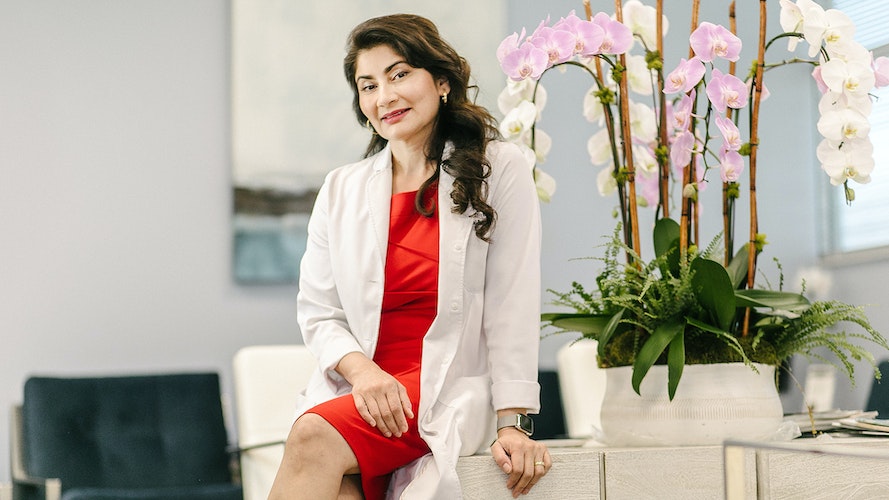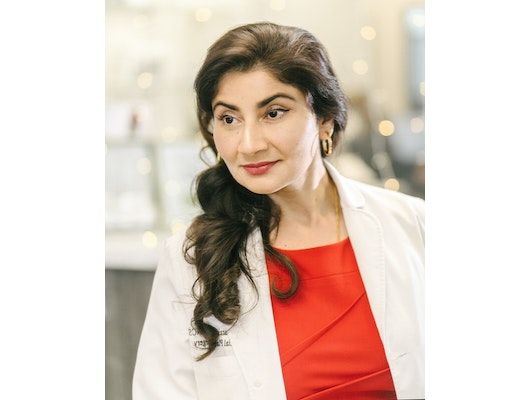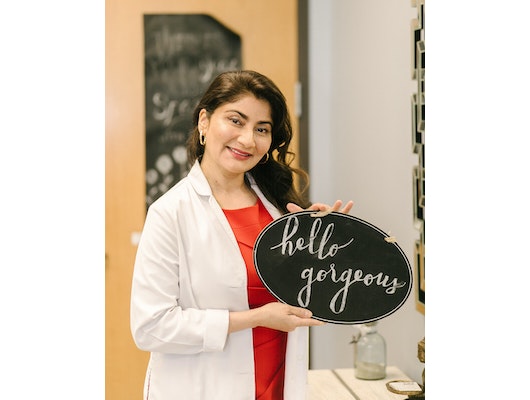Plastic Surgeon Dr. Kay Durairaj Wants to Be a Teacher and Role Model For New Injectors Everywhere
Thespotlyte | August 02, 23

As someone who’s been treated with cosmetic injectables on multiple occasions, I’ll admit it: getting pricked by needles in your face isn’t always pleasant. That’s why it’s so important that you ensure those needles are in the hands of an expert.
Enter Dr. Kay Durairaj, who has made it her mission to ensure that you have the best possible experience with medical aesthetics. When the UCLA®-trained doctor isn’t treating her own patients, she spends her free time educating up-and-coming doctors on how best to inject their own. “I’m a firm believer that it’s important to educate,” she tells me over the phone, noting that she prides herself on being open about her signature techniques. “You want to find someone who hopefully knows what they’re doing.”
Not only is Dr. Kay passionate about teaching other doctors about injectables, but she can also teach the rest of us a thing or two about them, too. Here, she shares her journey to becoming one of our favorite professors of plastic surgery, plus the products and treatments she can’t live without.
[Editor’s note: Injectable wrinkle reducers temporarily smooth the look of moderate to severe wrinkles in certain areas of the face, including the forehead, frown lines, and crow’s feet. Injectable filler is a temporary treatment that adds volume to areas of the face such as the lips, cheeks, and laugh lines. Like any medical treatment, both injectable wrinkle reducers and injectable fillers have potential risks and side effects. Talk to a licensed provider to see if they’re right for you. And learn more now by chatting with our team of trained aesthetics specialists now.]

Spotlyte: What made you decide to become a plastic surgeon?
Dr. Kay Durairaj: I’m a bit of an artist myself, I sculpt and I paint . . . I think that the facial anatomy is the best anatomy of the body. And I really enjoy interacting with patients on a level where I can help them and change a feature [to get the results they’re looking for].
Spotlyte: You stress the importance of taking care of the skin on your the neck — why is that?
KD: The neck is very overlooked. We spend so much time treating facial [features], but the neck is really [important too]. The [underlying support for the] skin of the neck is different from the face, [so neck skin is] one of the first things that we start to notice [sagging]. [It changes in a different way than on] our face, so it’s important to keep up with the hands, neck, face, and chest.

Spotlyte: What is your philosophy when it comes to beauty?
KD: You know, I truly feel that when you look good, you feel more confident, and you just feel better about yourself. There’s no question in my mind that human beings have an element of vanity, but it really affects your psyche when you start to look run down.
You need to understand the concept that we all have this vehicle, and you can’t maintain your vehicle without some kind of inputs, right? You’re not going to drive a car for 80 years without giving it any maintenance. So the same thing goes for your face.
Spotlyte: What’s your own day-to-day skincare routine like?
KD: I am definitely a skincare fanatic. I have a 10-step routine, and I think every person should. Your skin is your biggest organ, and it needs multiple levels of protection. That’s one of my most happy meditative moments of the day: when I can just pause and take a few minutes to do a little lymphatic massage.
[Editor’s note: If you take blood thinners, talk to your doctor before doing or receiving a lymphatic massage.]
My first few steps in the morning are my hyaluronic serum followed by my KD Brighten & Tighten Vitamin C Serum. Then once that soaks in, I add some solution for eyelashes. I love it for my long lashes. That’s followed by my KD Perfecting Sunshield sunscreen. I definitely take extra attention around the eyes — whenever I’m using a good eye cream, I’ll put some around my lips because it helps prevent lipstick lines, too. And then lastly, the Lift it UpTM Neck Cream.
In the evenings, I add a pea-sized amount of [prescription] tretinoin and mix that with my Night QuenchTM, which has stem cell growth factors and is super hydrating, but not too greasy. I also love to use glycolic acids throughout the week. I often sleep with a 20 percent glycolic cream because it exfoliates and eats up dead skin cells, and it just gives you a glow that you can’t replicate.
[Editor’s note: As always, talk to your doctor before starting or stopping any new treatment. Retinol shouldn’t be used by those who are pregnant, considering getting pregnant, or nursing. Please consult with your doctor before use.]

Spotlyte: In addition to the products you love, are there any lasers or medical aesthetic treatments you swear by?
KD: I believe in having frequent light peels. I have a little pigmentation, and [one of] the best [treatments] for pigmentation actually is not laser, but rather light chemical peels. But I do believe in the Thermi250® laser, which is the tightening laser. It’s really great for mild looseness and loss of elasticity of the skin around the eyes and the neck. When we talk about getting rid of crepiness of the neck, it works great for that.
Spotlyte: Which injectables do you get done?
KD: I’ve been using injectable wrinkle reducers since I was 27, [and] I personally have had filler in my cheeks to give a little lift. Areas change and lose volume as a normal part of aging.
[Editor’s note: Injectable wrinkle reducers temporarily smooth the look of moderate to severe wrinkles in certain areas of the face, including the forehead, frown lines, and crow’s feet. Injectable filler is a temporary treatment that adds volume to areas of the face such as the lips, cheeks, and laugh lines. Like any medical treatment, both injectable wrinkle reducers and injectable fillers have potential risks and side effects. Talk to a licensed provider to see if they’re right for you. And learn more now by chatting with a trained aesthetic specialist.]
Spotlyte: You teach other up-and-coming doctors in the industry how to inject properly. Why is that important to you?
KD: I’m a firm believer that it’s important to educate. There are a lot of people in our industry who are very competitive and secretive — [they] kind of want to hide the information, or prevent other injectors from getting out there. Patients need to have good providers. I don’t want people to see untrained providers who just learn with non-skilled techniques. I want to be a great teacher and a great role model for new injectors out there [so that they] do it right.

Spotlyte: In addition to educating professionals, you also like to educate consumers. What are you hoping to convey?
KD: I love teaching patients. It’s been a personal mission to make my specialty less of a mystery. I think the only images that people get of plastic surgery are bad images and botched images, and I want [people to understand it can be] a [positive] thing [and] normal women come in. You don’t have to be a glamour girl. You can be a normal-thinking, rational executive woman, or a homemaker who just wants to keep themselves [looking the way they want to]. And I don’t want anyone to feel intimidated by the process.






